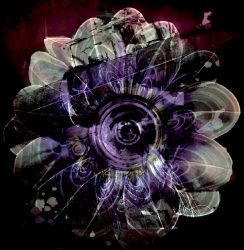Whenever I listen to music by Arvo Pärt, I can experience a lot of different things. But one of the last things that comes to my mind is a mathematical analysis of the Tintinnabuli (Bell- ) compositional style Pärt often uses – a quiet, minimalist, and often meditative style that (quote from the Wikipedia Page): “is characterized by two types of voices, the first of which (dubbed the “tintinnabular voice”) arpeggiates the tonic triad, and the second of which moves diatonically in stepwise motion.”
For “Tintinnabuli Mathematica, Vol. I“, Guy Birkin has programmed algorithms to create generative music (random and thus relatively unpredictable music created following a pre-defined set of choices and rules) based on the Tintinnabuli style.
Unfortunately, I was never very good at maths. (To be honest, I had to have a lot extra lessons to be able to finish high-school). This means I can only partly understand the full details of this album’s concept, which combines mathematics (like ‘using stochastic methods including equal-weighted random choice and random walks’ and ‘integer sequences that are fractal and chaotic’) with music theory.
But, as a listener, I don’t really have to understand it in full detail – it suffices to listen and enjoy!
Dr. (!) Guy Birkin has been studying these kind of processes extensively. He is not only a visual artist and musician whose creative work is based on generative processes, but he is also pursuing academic research on the perception and creation of complexity in visual art and music.
His background and interests means that his music is never ‘just’ music: it’s not ‘improvised’ music, but music that comes from a theoretical background.
‘Academic’ music, true – but in this case that is not meant as a negative statement, because it is very enjoyable to listen to too.
Although Guy Birkin’s experience in music performance has included playing piano, pipe organ, steel drums, church bells, guitar and bass, none of these instruments are used here.
Strictly following the nature of the concept, Guy “matches the purity of the ideas with pure, almost sinusoidal, percussive tones similar to a glockenspiel or toy piano”.
While I can understand this choice, I sometimes found these synth sounds a bit too thin to do real justice to the beauty of the compositions, especially when listening to the full album at once. I would definitely love to hear the resulting compositions played on different instruments too: like piano, marimba, xylophone….
But I guess that would mean they would have to be written out – and thus would not be the result of a generative process anymore…
By the way: don’t forget to also download the (free!) Sequence 7 compilation offered by Future Sequence: it contains the 7 minute ‘Tintinnabuli Mathematica 12d‘ – a majestic example that (strangely enough) is not featured on the full album.
(This particular track is also used as the closing track of the “Incidental Memories” mix, by the way, so you may want to check that out too!).
Some more background information about Tintinnabuli Mathematica can be found on Guy Birkin’s weblog ‘Aesthetic Complexity’



